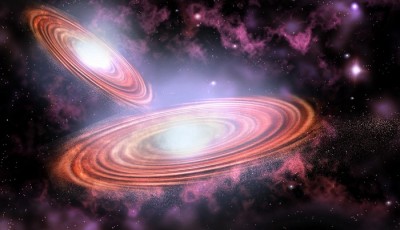Two Supermassive Black Holes are about to Collide in Virgo Constellation
Both the black holes are estimated to be a staggering three-and-a-half-billion light years away from our solar system.
According to scientists, when two black holes are approaching collision, the quasars will start to illuminate at regular intervals.
Now, astronomers at Columbia University show added proof of the fact that a pair of orbiting black holes is leading to rhythmic flashes of light that are originating from quasar PG 1302-102.
At the onset of 2015, astronomers found a pair of mammoth black holes circling toward a collision of such intensity that it would send a burst of gravitational waves spreading out through space-time itself.
The black holes continue to grow in brightness, something that will occur every five years due to the light emitted from the discs that swing around them, according to The New York Times. Most quasars in normal course brighten and dim randomly. The duo is separated by just one light week – and while that may seem like a great distance, it’s actually quite close by space standards, considering the next closest known pair of black holes are 20 light years apart.
Observing black hole binaries directly is very challenging, but we might be able to detect them through quasars – beacons of bright light that black holes emit as they burn through cosmic gas and dust.
In this case, the researchers built a model to explain the repeated signal and see if the black holes were as close as predicted.
The newly found technique that allowed astronomers spot the unusual pair could help them detect even more black holes that are about to merge or are in the midst of a collision.
The good news is that it won’t happen for another 100,000 years. At the time of discovery, scientists said they expected the two to crash into each other in 250,000 years. They predicted they would find a five-year cycle in the pair’s ultraviolet emissions, which is exactly what happened.
“We can start to put numbers on the rates that black holes come together and build up into larger black holes, and use what we’re learning to search for more black holes pairs”, said study coauthor David Schiminovich, an astronomer at Columbia.
The two black holes are 3.5 billion light-years far from our galaxy, and give researchers important insight on the growth of our universe.
Supermassive black holes hold a tremendous gravitational pull.
“The detection of gravitational waves lets us probe the secrets of gravity and test Einstein’s theory in the most extreme environment in our universe’s black holes”.
With more black holes to watch, the chance of witnessing a crash and the gravitational waves predicted, but not yet detected, by Einstein’s general theory of relativity, grows. D’Orazio, who is the study’s lead author, also adds that getting there would be the holy grail in his field.









